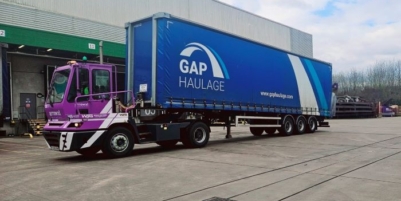-
Nutrivend selects Forterro’s Orderwise to support online expansion and streamline operations - April 11, 2025
-
ARROWXL LAUNCHES AMBITIOUS ZERO WASTE ROADMAP - April 8, 2025
-
THE BCMPA’S NEW CAMPAIGN DRIVES OUTSOURCING SUCCESS IN Q1 - April 7, 2025
-
BLACKOUT TECHNOLOGIES TARGETS TELEMATICS-INTEGRATED MOBILE DEVICE BLOCKING TO COMBAT SMARTPHONE DISTRACTION - April 1, 2025
-
Sparck Technologies awarded Royal designation - March 27, 2025
-
OpenADR Alliance announces first OpenADR 3.0 certified products with EVoke Systems, E.ON Energy and Universal Devices - March 25, 2025
-
Growing fulfilment and contract packer appoints new Managing Director - March 25, 2025
-
When is it time to invest in a WMS? Understanding the key trigger points - March 25, 2025
-
eCapital helps Vantage Recruitment on its journey to financial success - March 24, 2025
-
Hugo Beck Celebrates 70 Years of Packaging Innovation with Open House Events - March 20, 2025
Local market leaders including Bidvest International Logistics provide a fascinating perspective on where this vital part of the nation’s economy rests and what needs to be done to address increasing threats
South Africa’s logistics industry is battling a war on many fronts.
Bad weather, equipment breakdowns and shortages and congestion continue to hamper the country’s ports and adding days to the supply chain, creating havoc downstream.
The conflict in Ukraine and the weakness of the rand are exacerbating the situation, with inflation skyrocketing to the detriment of consumers.
In addition, South Africa is now firmly in the crosshairs of cyber criminals. Anti-virus provider Kaspersky’s research shows that ransomware attacks in South Africa doubled between January and April 2022 compared to the same period last year.
The 2021 cyber attack on Transnet was especially damaging, impacting ports, harbours and pipelines to the point that the state enterprise was forced to declare force majeure at several container terminals.
Lesiba Sebola, Director of Information Technology at Bidvest International Logistics (BIL), says it’s paramount to safeguard IT infrastructure given how central it’s become to operations.
“The bottom line is the financial losses incurred. Transnet not being able to operate their ports affects us, and obviously if there are attacks in our own environment that necessitates downtime of the infrastructure and it would be difficult to conduct business,” he says.
Sebola says the most prevalent form of attack is phishing that seeks to get information from users.
“You need a multifaceted approach to protecting your information. We have perimeter security, which involves firewalls. And with operating systems there’s always updates you need to do, whether it’s an operating system update or security update to eliminate vulnerabilities that the providers have identified.”
Anti-virus software is another must as part of your end-point security.
“Your end-point security is also important to protect the confidentiality of your company information in case of the stolen end-point devices. Sometimes we tend not to think about stolen goods and how they can be used in the process of a cyber attack.”
However, Sebola stresses the most important aspect of cyber security is user awareness.
“The majority of successful attacks happen here. If your users are not aware, it’s like taking a key to your house and throwing it over the security fence for attackers to use.
“At BIL, we have an online program where staff can learn about security and the different types of attack, e-mail impersonations, for example. If they spot an e-mail that looks a bit suspicious, we’ve got a special process to which they can send an alert for us to investigate. This forms part of our induction process and occurs on a quarterly basis. We also hold an annual Computer Security Day in November.”
Like Sebola, Craig Rosewarne, MD of cyber security company Wolfpack Information Risk, believes everyone is at risk of cyber attacks.
“You could be an individual, a nonprofit, a small charity, it doesn’t matter. The hacker doesn’t care where the money comes from,” he says.
“The harsh reality is that attacks can’t be prevented, but organisations can defend against them, provided they recognise the complexity of digital crimes and tackle them accordingly.”
For Sebola, this means continuously monitoring networks to establish any irregular patterns.
“You have to have an incident response plan in place, but you also can’t have a prescriptive one that is generic. This plan will tell you who needs to be involved, who the contact people are, and not just from IT. You need to establish who is involved from legal, operations and the communications side, because there are various aspects that you want to consider.
“When you have cyber insurance, part of the requirement is that you inform them of any breaches. It’s important to keep logs from the IT side. Make sure you contain the attack so you can preserve the evidence. This is important in terms of the analysis later on to prevent such a breach from happening again.”
































